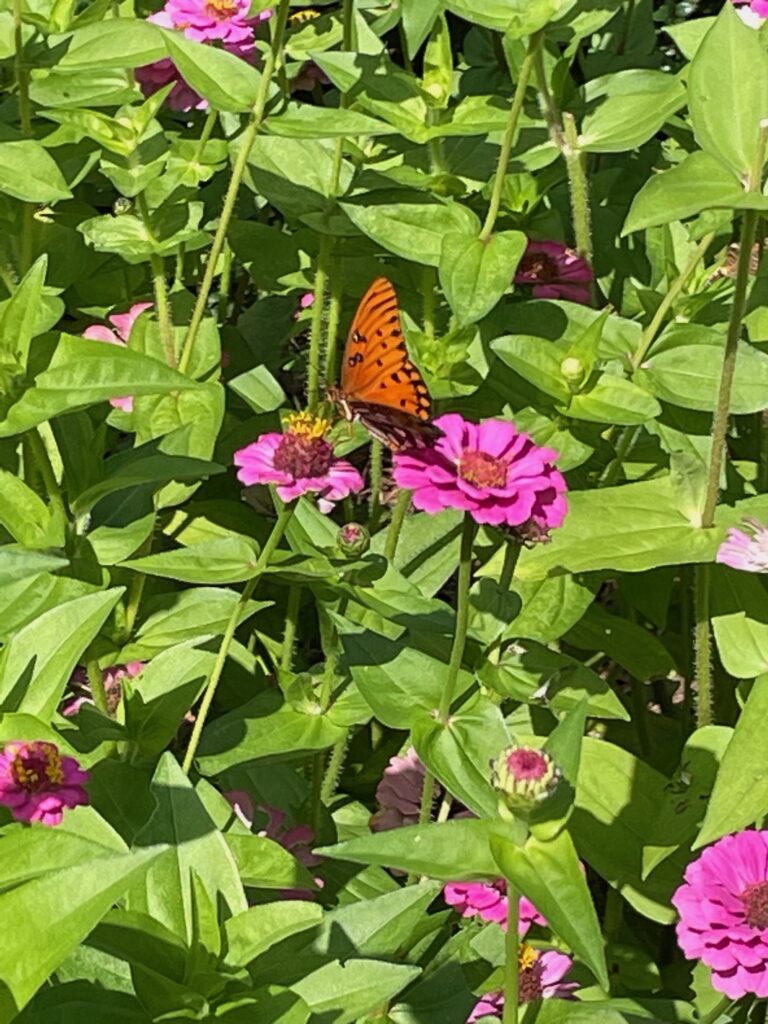So, I failed. The kind ladies from the Georgia Native Plant Society came this morning and strolled through my garden. And, much to their disappointment – and my surprise – I do not qualify as a native plant habitat. No one likes to fail but if I had to do it, I couldn’t have failed with a nicer group of people.

The problem isn’t that I don’t have enough native plants, the problem is that I also have too many non-natives. And by non-natives I don’t mean weeds. They assured me that if I took out the hostas, lenten roses, variegated Solomon’s seal, the liriope, zinnias, dahlias and marigolds, I might pass. But why would I do that?! That seems like a lot of work, effort and money, to say nothing of the fact that all that tearing out and replanting would be detrimental to the organisms in the soil and the overwintering insects. And, I like those plants. Would my garden be any more appealing and useful to pollinators and wildlife if I simply removed them? Would it help a greater environment? I think not.
But this certification is not about the worth of a garden, it’s based simply on the percentage of plants found on your property that are considered native to Georgia or the Southeast. For example, poison ivy (which is native) counts but zinnias do not. I have a beautiful garden with a lot of native plants in it, just not in the right proportions for certification purposes. For the gold standard, 2/3 of all the plants on the property have to be native.

Additionally, they found ivy – not in a pot, I had removed ALL the potted ivy. But I haven’t been able to get rid of all of it on the property and they found it growing under the deck and in the way back part of my yard. The fact that I’ve removed 98% of the ivy from my yard doesn’t count, just what’s there now.
But it all made me stop and ponder about why I wanted certified in the first place and how I felt about not getting that certification and, more importantly, why I garden. It’s been a good conversation to have with myself.
I wanted the certification because I am always trying to encourage people to grow more native plants and I thought a certification sign out front might help. I love our native plants and feel that they greatly contribute to the overall health of the environment. But I love my non-natives as well and there are certain landscape needs that I can’t fill with native plants, or at least I haven’t found them yet.
But I don’t garden for certification or recognition. I garden because I love to dig in the earth and help make things grow. I garden because the flowers I grow are beautiful. I love being an unexpected spot of glorious color along a neighborhood street. I love watching pollinators flock to the flowers. I love sharing my garden and have given away hundreds of cut flowers this summer. I love working in my garden and chatting with my neighbors who stop to admire the flowers. All in all, it’s been the best gardening season of my life.

I think native plant habitats are wonderful and useful and great for the environment and hooray for those who choose to garden this way. As for me? I’m happy and satisfied with what I’ve created. Certified or not, it’s a garden to love.

Ivy is sneaky! When we moved here 30 years ago the builder’s wife was so proud to have planted ivy on the bank to control erosion. I thought, “If I’m smart, I’ll go dig up every sprig of it right now.” But I didn’t — it did serve a purpose — and I’m still going after an errant upstart now and then.
I love your garden and I love the reasons that you garden. You inspire me to be thoughtful about what I grow and how I garden.